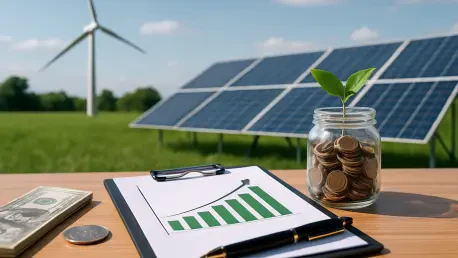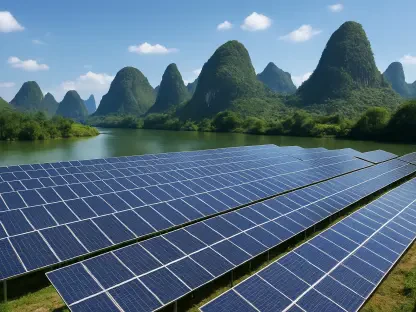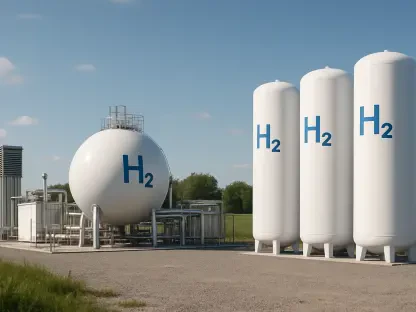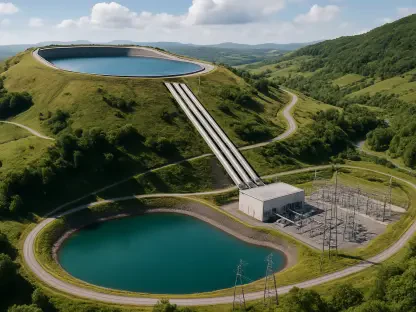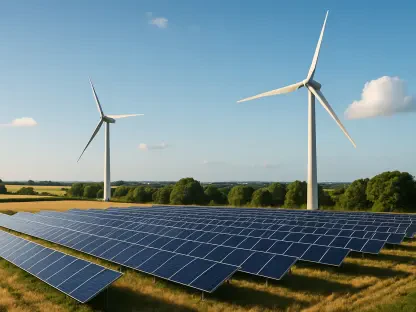What happens when an industry poised to save the planet loses billions in a single year? Right now, the clean energy sector in the U.S. is grappling with a staggering $24 billion drop in investments, a figure that has sent shockwaves through boardrooms and communities alike, raising urgent concerns about the future. This isn’t just about money—it’s about stalled projects, vanished jobs, and a looming question: can America still lead the charge toward a sustainable tomorrow? The latest data paints a picture of both crisis and opportunity, demanding attention from policymakers, industry leaders, and citizens who envision a greener world.
The Stakes Couldn’t Be Higher
This dramatic rollback isn’t merely a financial statistic; it represents a critical juncture for the clean energy movement. Since landmark legislation spurred over $135 billion in projects and 125,000 planned jobs a few years ago, the sector has been a beacon of economic and environmental hope. Now, with global climate targets tightening and international competitors racing ahead, this $24 billion loss threatens to undermine innovation, delay critical infrastructure, and weaken America’s position in the global green economy. The impact reaches far beyond balance sheets, touching the lives of workers and towns banking on these initiatives for stability and growth.
Unpacking the Numbers Behind the Decline
The scale of this setback is stark: $24 billion in investments have been withdrawn this year alone, dwarfing the $11 billion in new funding announced during the same period. A significant chunk of this loss—$1.6 billion—occurred in a single month, with high-profile cancellations setting a grim tone. For instance, Natron Energy, a promising sodium-ion battery startup, shut down operations in California and Michigan while scrapping plans for a $1.4 billion factory in North Carolina due to insurmountable funding challenges. Such closures highlight the fragility of an industry heavily reliant on consistent financial and policy support.
Beyond individual cases, specific sectors like battery storage and electric vehicle (EV) manufacturing have taken the hardest hits. Out of 42 major projects withdrawn this year, 32 fall within these categories, accounting for $19.2 billion in lost investment and nearly 18,700 jobs. These numbers reveal a troubling trend: the very technologies essential to a clean energy transition are the most vulnerable when backing falters. Meanwhile, even as new investments trickle in, their scale pales in comparison to the withdrawals, leaving the sector struggling to regain lost ground.
Policy Shifts Fueling the Downturn
A major driver behind this crisis lies in recent legislative changes that have shaken investor confidence to its core. The passage of a new bill in July, which slashed key tax credits established by earlier pro-green policies, has been pinpointed as a turning point. Industry giants like General Motors have directly cited these policy reversals as reasons for scaling back EV production, anticipating slower consumer adoption without incentives or stringent emissions rules. This abrupt shift has created a ripple effect, discouraging investment at a time when stability is desperately needed.
The consequences of these changes are not abstract—they’re felt in real communities. Factories that were set to break ground remain empty lots, and workers who trained for roles in cutting-edge fields find themselves sidelined. The connection between policy and progress has never been clearer: without a reliable framework, the clean energy sector risks stalling just as the world needs it most. This uncertainty has left stakeholders scrambling to predict what comes next in an environment where the rules seem to change overnight.
Voices of Concern and Resilience
Across the industry, the alarm is palpable. An advocate from a leading clean energy group called the $24 billion withdrawal “a wake-up call,” emphasizing that inconsistent policy support could cede America’s edge in innovation and job creation to global rivals. Corporate leaders echo this frustration, with General Motors publicly linking their reduced EV commitments to diminished government backing, projecting a tougher road ahead for market growth. These statements reflect a shared fear that short-term losses could translate into long-term setbacks.
Yet, amidst the gloom, glimmers of hope persist. A $457 million investment by Hitachi Energy in a grid manufacturing facility in Virginia stands out as a rare success story from recent months, part of $542 million in new projects creating nearly 1,000 jobs. While these gains are modest against the backdrop of cancellations, they signal that not all momentum has been lost. Stories of perseverance from certain corners of the industry suggest that with the right actions, recovery remains within reach.
Charting a Path Forward
Addressing this crisis demands strategic, concerted effort from multiple fronts. Restoring investor trust through stable, supportive policies must be a priority—advocacy for reinstating tax incentives or crafting equivalent measures could pressure lawmakers to act. Industry players, meanwhile, should seek diversified funding by forging private partnerships or tapping international investors to lessen dependence on federal shifts. These steps could provide a buffer against domestic uncertainties that have proven so disruptive.
Additionally, redirecting focus toward less policy-sensitive areas like grid infrastructure offers a practical way to sustain growth and jobs in the short term, as demonstrated by recent projects. Engaging the public is equally vital—by showcasing tangible benefits such as lower energy costs and cleaner air, the industry can build grassroots demand that policymakers cannot ignore. Together, these approaches form a roadmap to counteract the massive financial hit and secure the sector’s future in the U.S., ensuring that clean energy remains a cornerstone of economic and environmental progress.
Reflecting on a Critical Moment
Looking back, the $24 billion loss in clean energy investments marked a sobering chapter for an industry once seen as unstoppable. The setbacks, driven by policy reversals and funding woes, exposed vulnerabilities in sectors critical to a sustainable future. Yet, the resilience shown through smaller-scale successes hinted at untapped potential waiting to be unleashed. Moving forward, stakeholders must prioritize rebuilding trust with robust policies, diversifying financial strategies, and rallying public support to turn this crisis into a catalyst for renewed commitment. The path ahead depends on seizing this moment to strengthen, not abandon, the promise of a greener America.
